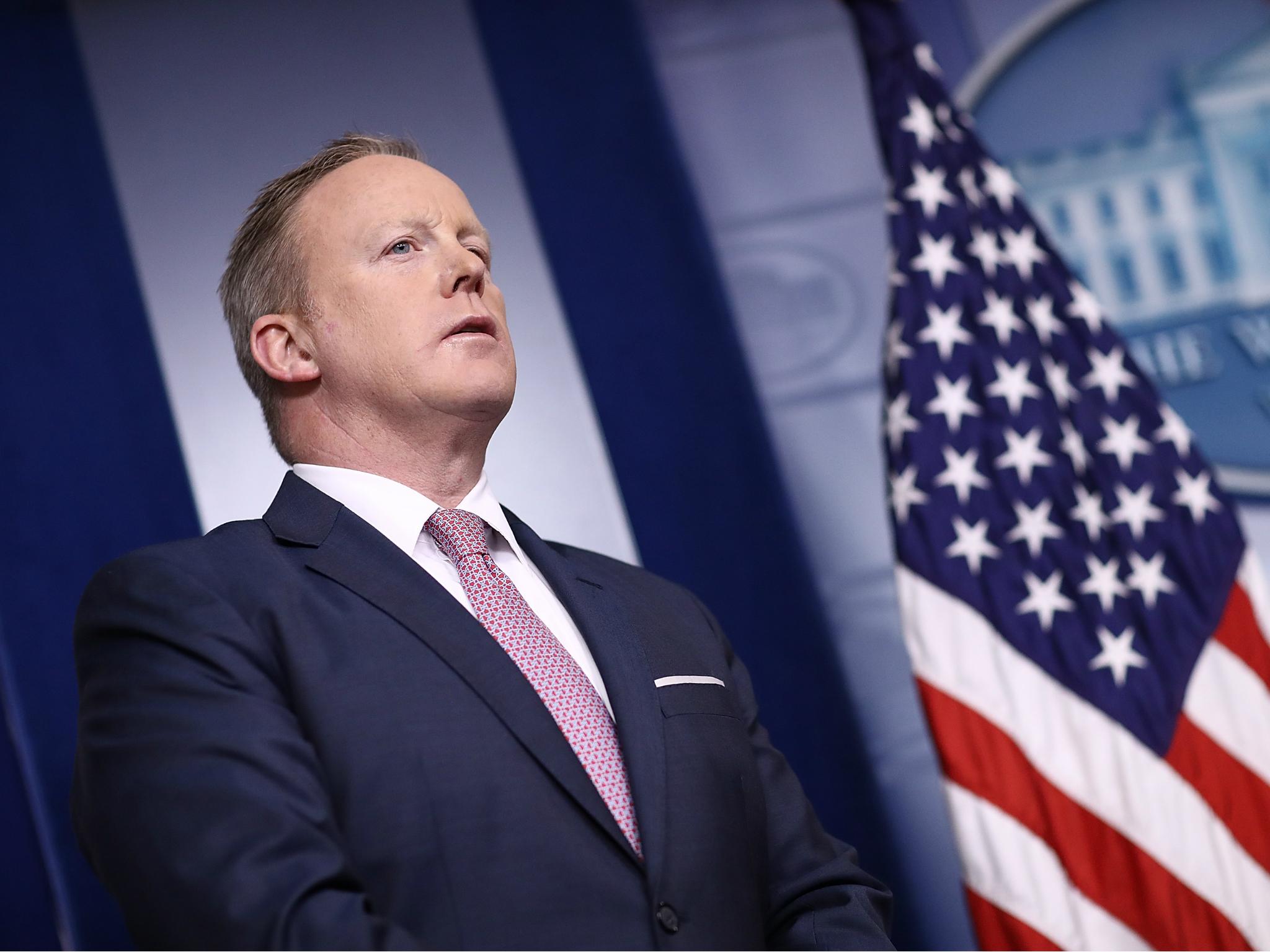Steve Bannon explains why Sean Spicer stopped holding press conferences: 'He got fatter'
The Trump administration has been scaling back their press briefings for months

Your support helps us to tell the story
From reproductive rights to climate change to Big Tech, The Independent is on the ground when the story is developing. Whether it's investigating the financials of Elon Musk's pro-Trump PAC or producing our latest documentary, 'The A Word', which shines a light on the American women fighting for reproductive rights, we know how important it is to parse out the facts from the messaging.
At such a critical moment in US history, we need reporters on the ground. Your donation allows us to keep sending journalists to speak to both sides of the story.
The Independent is trusted by Americans across the entire political spectrum. And unlike many other quality news outlets, we choose not to lock Americans out of our reporting and analysis with paywalls. We believe quality journalism should be available to everyone, paid for by those who can afford it.
Your support makes all the difference.The White House press corps has become exasperated with the increasingly opaque methods of communications the West Wing employs to deal with reporters, but one senior official has a pretty simple explanation.
“Sean got fatter”, Chief Strategist Steve Bannon told an Atlantic reporter when asked why White House Press Secretary Sean Spicer has been holding briefings and gaggles off-camera lately.
The comment came in a one-off text, and was not elaborated upon in a follow up message.
Whether the text was a joke, or if it was an appropriate one if so, the message was quickly criticised by the likes of former first daughter Chelsea Clinton.
“The White House using fat shaming to justify increased opacity. 2017”, Ms Clinton tweeted.
When the White House announced that they would hold a televised briefing after all, some joked that Mr Spicer wanted to do it to clear his name.
“I have not gotten fat! Period”, journalist Josh Barro tweeted, mocking Donald Trump’s signature tweeting style.
Daily press briefings have been pared back since Donald Trump officially became president. Although a Washington tradition, the formerly daily event is not without its critics. That criticism comes from media observers — who have said that the exercise is mostly just grandstanding for the administration — and from the 45th President himself, who has discussed eliminating them altogether in favour of written briefings.
Still, reporters seem to be pretty annoyed.
“It feels like we’re slowly but surely being dragged into what is a new normal in this country, where the president of the United States is allowed to insulate himself from answering hard questions”, Jim Acosta, CNN’s chief White House correspondent said this week after an off-air briefing. “I don’t know why we covered that gaggle today, quite honestly Brooke, if they cant’ give us the answers to the questions on camera or where we can record the audio. They’re basically pointless at this point”.
Covering the White House, and the avenues of access available to the press, have evolved throughout the existence of the US. Back in the 19th century, the press didn’t even regularly maintain a presence in the White House because the presidency wasn’t really all that powerful back then. In the years since, and as the executive office has amassed more and more power in American politics, beat reporters began to be stationed exclusively to cover the president, and the first White House press secretary was named in 1929.
Even still, technology advances have had a major impact on the way in which the White House communicates with the public, and how the press does the same. Press briefings weren’t broadcast in their entirety until the 1990s during President Bill Clinton’s tenure — a move that was perhaps later regrettable for the administration during the Monica Lewinsky scandal.
Other major technological advances have greatly impacted the press corps in the 21st century. Mr Trump’s predecessor, Barack Obama, was able to harness the power of social media during his campaigns and during the presidency to reach out to the public directly, just like Mr Trump does with his Twitter profile. That led to the perception that Mr Obama made himself personally less available for media interviews than past administrations.
Join our commenting forum
Join thought-provoking conversations, follow other Independent readers and see their replies
Comments